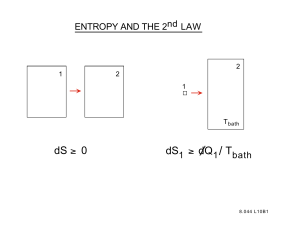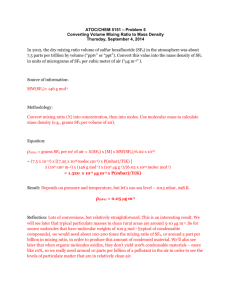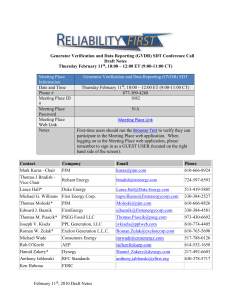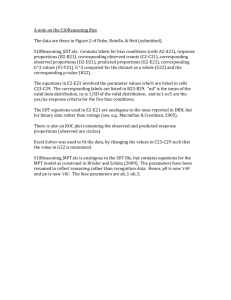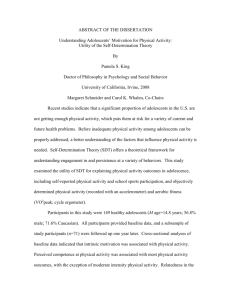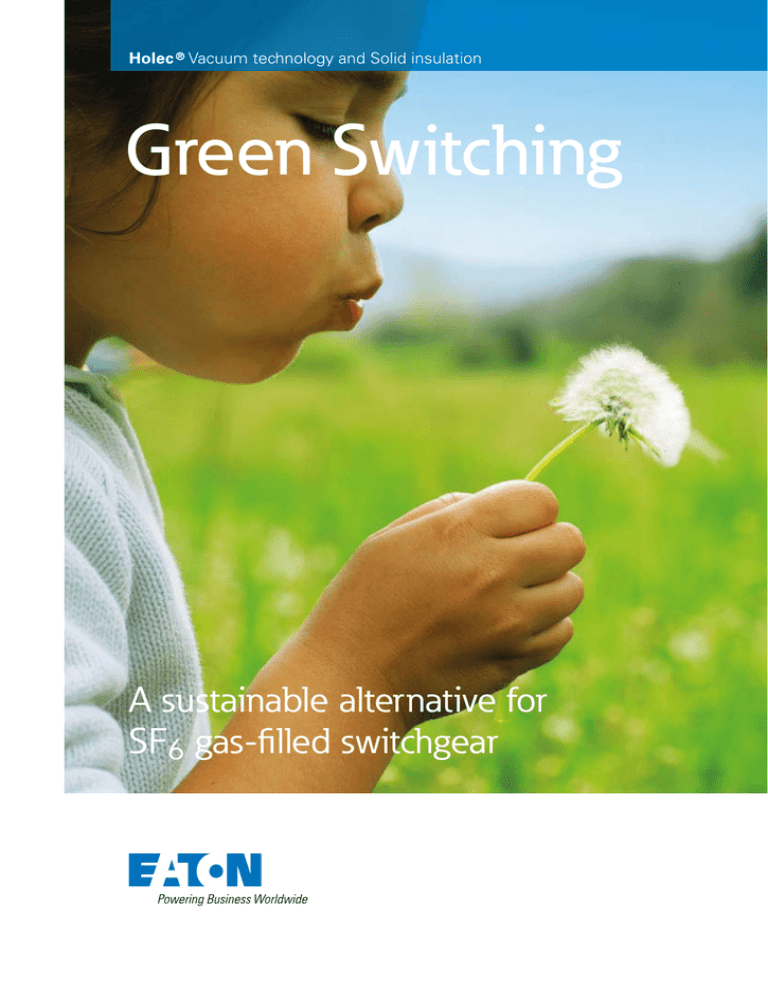
Holec ® Vacuum technology and Solid insulation
Green Switching
A sustainable alternative for
SF6 gas-filled switchgear
Environmentally-friendly energy technology
Vacuum technology and Solid insulation
In recent years, the environment has become a very
important issue within society. Alarming reports on the
greenhouse effect and climate change means that
everyone is aware of the serious threat to life on earth.
It is time for everyone to take responsibility for these
developments.
Emissions of SF6 gas from switchgear contribute
significantly to the threat of the greenhouse effect
and associated climate change. Production of SF6
is still increasing worldwide, despite the fact that this
greenhouse gas is listed in the Kyoto protocol as
“undesirable” [1]. Eaton’s full range of SF6-free mediumvoltage switchgear systems (see box) provide an
opportunity to make an active contribution to reducing
the worldwide emissions of SF6-gas.
Alternatives for SF6
SF6 gas is used as insulation and switching medium in switchgear since it has good switching properties and allows for relative
compactness of gas insulated switchgear when compared to
conventional air-insulated switchgear. But, while there is no
economically viable alternative to SF6 gas for high voltage (HV)
switchgear (> 52 kV) in the transmission network, application of
SF6 is totally unnecessary for medium voltage (MV) switchgear
(< 52 kV) in the distribution network.
Fully equivalent alternatives are commercially available on the
market [2]. These alternatives may consist of the combination of
vacuum technology for switching and high-quality materials for
insulation purposes, resulting in minimised dimensions and at
least the same degree of compactness as for SF6 switchgear.
A deliberate choice in favour of SF6 free switchgear
In the 1980’s, the Holec group, as it was then, made a fundamental
choice not to use SF6 as a switching and insulation medium for
medium voltage equipment. Holec had in the 1980’s SF6
technology available in-house. The main reason for not using any
SF6 in medium voltage equipment was the complexity of the
treatment required and the need for additional safety measures
when used in public locations such as residential areas and
shopping centres. There was also the possibility that SF6 could be
labelled an environmental risk, as was the case then with PCB’s
and asbestos. Eaton’s Cutler-Hammer brand, which was the market
leader in the United States with NEMA/ANSI medium voltage
equipment, was also developing SF6 free medium voltage
switchgear for the same reasons.
Features of vacuum technology
• Safe
• Compact
• Reliable
> 30,000 mechanical switching operations
> 100 switching operations of the short-circuit current (Ik)
• Maintenance free
Cross-section of a vacuum interrupter
SF6 gas – the facts
Annual worldwide emission of SF6 gas
SF6 is a synthetic compound consisting of one sulphur atom
and six fluorine atoms and does not normally occur in nature.
SF6 is gaseous at room temperature and is heavier than air. Due
to the strong bonds between the sulphur and fluorine atoms SF6
is inert under normal circumstances. This gas has certain
electrical properties that make it suitable as insulation and
switching medium in switchgear for power distribution.
As energy consumption increases the use of SF6 increases
in absolute terms as well. It is estimated that annual SF6 gas
production will reach around 8000 metric tonnes, 80% of which
is used in electrical energy technology for switching operations,
cooling and insulation [3].
SF6 breaks down into toxic substances on incineration, for
example when an internal arc occurs in the switchgear. In the
event of such an internal arc SF6 gas and its toxic by-products
are released into the atmosphere. These reactions also occur in
normal use whenever an arc is suppressed. The toxic residues
will then remain in the housing, as a result of which special
precautions are required when dismantling and recycling the
system at the end of its service life.
Switchgear with SF6 gas
There are three principal designs for SF6 insulated switchgear.
With the first two, known as controlled pressure systems and
closed pressure systems, release of SF6 is unavoidable in practice.
This is because the systems require maintenance in the course
of their service life, at which point leakage occurs. Furthermore,
leakage occurs when the units are dismantled at the end of their
service life.
The third principle design is the hermetically sealed system, which
does not require maintenance in the course of its service life.
Emissions of these systems due to leakage are claimed to be
limited although these will never be zero, as in practice gaskets
are a source for leakage.Leaks can also not be ruled out in the
long term over the service life of the installation
(> 30 years).
The production of SF6 is still increasing, despite the fact that the
gas is included in the Kyoto protocol for its contribution to the
greenhouse effect. Recent studies have shown that the annual
percentage increase of SF6 gas in the air is 8% +/- 0.7%, the
highest figure of all greenhouse gases [4].
With the increase in the number of switchgear using SF6 gas
for switching and insulation purposes in electricity networks,
emissions of SF6 gas into the atmosphere will increase
accordingly, a trend which will continue if policy remains
unchanged.
Use of SF6 discouraged by the Kyoto protocol
Emissions of SF6 gas from switchgear contribute significantly
to the threat of the greenhouse effect and the associated
climate change. SF6 is on the list of greenhouse gases in the
Kyoto protocol [1]. SF6 is the most potent of the six main
greenhouse gases with a Global Warming Potential (GWP) of
23,000 [5]. The United Nations institution that monitors this, the
Intergovernmental Panel on Climate Change (IPCC), has since then
added SF6 gas to the list of extremely harmful greenhouse gases.
The Kyoto Treaty (1992) stipulates that emissions of SF6 gas must
be reduced. Discouraging use is the best answer to this for the
time being.
Eaton’s SF6-free switchgear for medium voltage
The medium voltage switchgear systems carrying Eaton’s Holec brand are based on the use
of vacuum switches combined with solid insulation material. This is an environmentally-friendly
technology in comparison with the methods used by many other suppliers, which use SF6 as
an insulation gas.
Magnefix 3,6 - 15 kV
Xiria 3,6 - 24 kV
SVS 3,6 - 24 kV
Unitole UP 3,6 - 17,5 kV
MMS 3,6 - 24 kV
Epoxy resin insulated
Ring Main Units for
energy distribution.
Metal-enclosed epoxy
resin insulated Ring Main
Units for energy
distribution and industry.
Metal-enclosed modular
epoxy resin insulated
switchgear system with
vacuum interrupters.
Metal-enclosed air
insulated motor control
centre and single busbar
main distribution system.
Metal-enclosed modular
double busbar switchgear
for energy distribution and
industry.
European F-gas regulation
As a consequence of the outcome of the IPCC studies and the
fact that SF6 is a greenhouse gas listed under the Kyoto-protocol
of which emissions should be mitigated [1], the European Union
passed legislation that bans SF6 for almost all applications, except
for electrical switchgear. The reasoning for this exception is that no
viable alternative would be available. Under the F-gas regulation
(2006) the use of SF6 is now prohibited for most applications, like
in sport shoes, car tyres, tennis balls and for double glazing [6].
The F-gas regulation prescribes a lot of precautions to limit the
emission in HV and MV switchgear applications. Utilities and
switchgear manufacturers have to take special measures to limit
the emission during the production, use, maintenance and end of
life of equipment containing SF6. Technicians involved in regular
inspections, maintenance, refilling and recycling of switchgear
containing SF6, need to be trained and certified. There are three
IEC standards that prescribe how to deal with SF6 for HV and MV
switchgear applications.
Corporate Social Responsibility
Over the recent years we have seen a trend of increasing
professionalism within the asset managers of the electricity
network companies. This has led to a more balanced approach
where the quality of the network, cost control, safety risks and
sustainability have to be considered during the decision making
process. Utilities are focusing more and more on Total Cost of
Ownership (TCO) instead of the initial purchasing price.
Asset managers within the larger utilities take the use of SF6
also into account from a financial point of view. They calculate a
certain percentage as penalty to compensate the potential risks
of SF6 and its by-products over the lifetime, and also reward SF6
free technology with a 5% to 10% benefit as a consequence
of the potential savings during the life cycle. This has led to a
more well balanced decision making process within the utilities,
as not only the initial investment costs are taken into account
Recent independent evaluations show that SF6-free
switchgear is not only technically equivalent, but also
more cost-competitive over the full service life.
Eaton supports the Green Switching initiative
Due to a growing concern about the impact of global warming,
several utilities and Eaton are joined in the Green Switching
initiative. Green Switching is a platform of users, manufacturers,
Non Governmental Organisations and other participants who are
concerned about the growing use of SF6 for MV applications.
The participants share the idea that the use of SF6 should be
prevented wherever there are alternatives available on the market.
The Green Switching platform has published a position paper
and several related publications. It also presents scientific and
technical articles about SF6 and its alternatives on a website.
More information: www.greenswitching.com
As a result of this Green Switching initiative there is a growing
consciousness in the energy distribution market about the use of
SF6. Utility network companies, industrial users, owners of railway
and underground infrastructure and public private investors in the
healthcare sector are becoming more aware of the health & safety
aspects of SF6 and its toxic by-products as well as its impact on
global warming. This has resulted in a growing concern about the
use of SF6 for MV applications.
References:
1. United Nations Framework Convention on Climate Change.
Kyoto protocol, Rio de Janeiro (Brasil) 1992.
2. Porte, W. and Schoonenberg G.C. “Green Switching - Opportunity to
avoid SF6 emission from electrical networks”, Fifth International Symposium on Non-CO2 Greenhouse Gases (NCGG-5), Wageningen,
The Netherlands 2009
3. Smythe, K. “Trends in SF6 and End-Use Applications: 1961-2003”, Conference on SF6 and the Environment. Scottsdale, Arizona,
December 1-3, 2004.
4. Powell, A.H. “Environmental aspects of the use of Sulphur Hexafluoride. ERA Technology Ltd. 2002”.
5. Intergovernmental Panel on Climate Change 2007. IPCC Fourth Assessment Report, Working Group I “The Physical Science Basis” Chapter 2.
6.European Union Regulation (EC) No 842/2006 of the European Parliament and of the Council.
Eaton Electric B.V.
P.O. Box 23
7550 AA Hengelo
the Netherlands
Tel.: +31 74 2464017
Fax: +31 74 2464025
holec-info@eaton.com
www.eatonelectrical.com
© 2009 Eaton Electric B.V.
All rights reserved
6042675 BR 001 / November 2009
PowerChain Management is a registered
trademark of Eaton Corporation.

